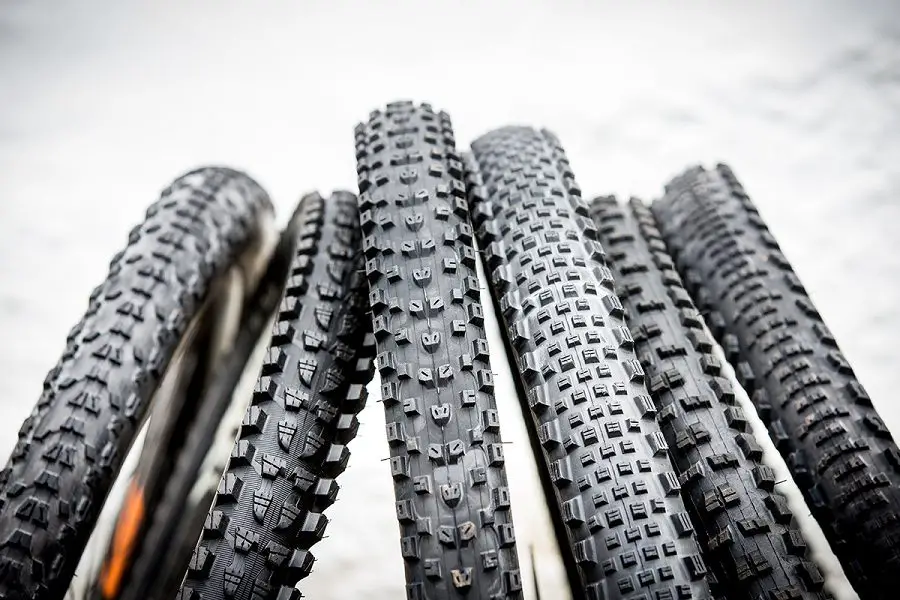Understanding the types of bike tires used to be very straightforward – you had on-road and off-road.
Nowadays, there are so many niche categories of bicycles, with different uses, that the bike tires, types, are blurred. How do you know which type of bike tire you’re buying and if it’s a good fit for your bike and, more importantly, how you plan to use that bike?
Choosing bike tires types is not as simple a task as it used to be. It’s important to be able to navigate between all the different tire types and know which bikes they’re good for.
Let’s walk you through everything you need to know about different bicycle tire types.
Contents
Bike Tires Types
It’s time to delve into each bike tire type. If you’re going to outfit your bike with new tires, it’s best to know what you’re getting yourself into.
Mountain Bike Tires
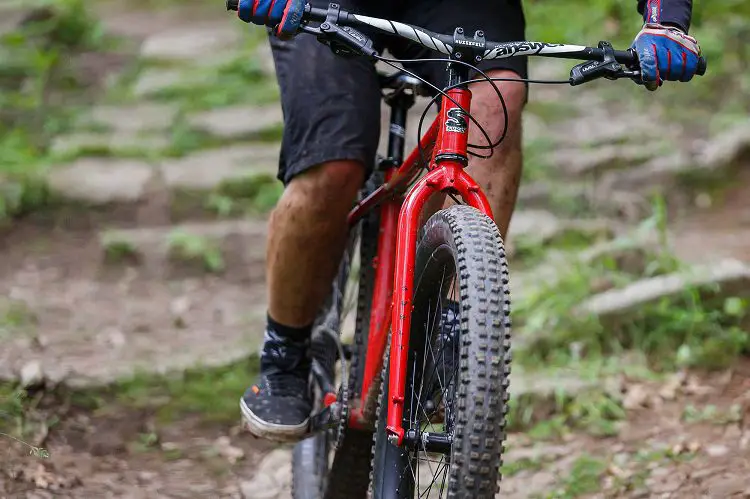
Mountain bike tires, commonly referred to as MBT tires, are used for off-road riding on rough terrain. Surprisingly, these tires are lighter than most other tire types, despite the rough treads on the outside of them.
With mountain biking, speed is everything. You need to build and maintain momentum without tiring yourself out, so many mountain bikers look at the weight of their equipment. They want lighter frames and lighter tires.
Mountain bikes have their own subsections that you absolutely need to know about before making a purchase decision.
- Cross-Country: Cross-country tires are the thinnest mountain bike tires. They allow for off-road trail riding without a ton of vertical diversity. If there isn’t a road, you can safely ride on dirt and gravel without worry, but you shouldn’t go off slopes or drop like you would be able to with fat tires/downhill tires.
- Downhill: Downhill tires allow for massive shock impact and feature extreme durability. These tires are thick, but not much more so than trail tires. The point of these tires is safe downhill travel without puncturing or popping your tires.
- Trail: Trail tires are one of the most versatile mountain bike tire types. These are used for light traveling on trails, with some incline and downhill use as well. If you’re exploring new areas to mountain bike and a change of scenery is a big deal to you, trail tires are your best bet.
- Fat Tires: Fat bike tire types that are used for high impact (more on these later).
These tires come in varying sizes as well. Downhill tires are an average of 2.4 ” in width, while fat tires can be up to 5 ” in width. Cross-country tires can be as narrow as 1.9 “.
There’s a big difference between each mountain bike tire type: Be sure that you know what you’re doing before you commit to one specific kind.
Clincher Tires
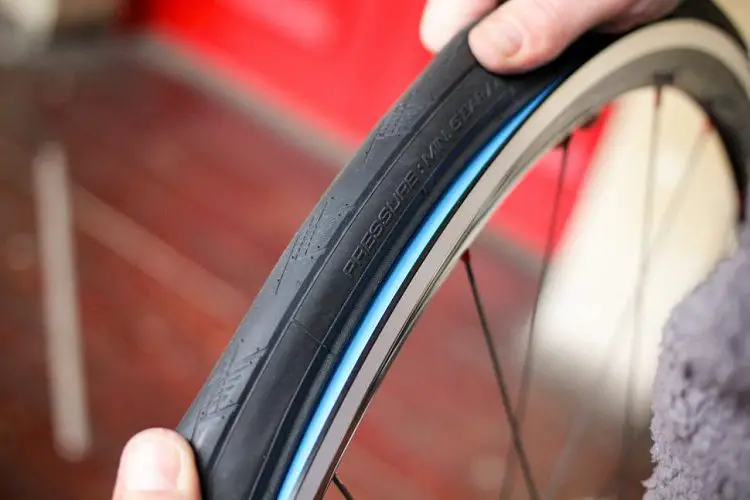
Clincher tires are the most common type of tire to exist. These simple tires have a bead that lays into your rim, and this holds the tube in place, as well as the exterior of the tire. You pump the inner tube up, and you’re good to go.
So, why are clinchers so popular when we know that tubeless and tubular tires offer smoother, nicer rides?
Primarily because they’re extremely cheap to replace compared to other tire types. Clinchers are common, so there’s no real issue when it comes to supply and demand.
Most online retailers and bicycle shops will have clincher bike tires types in stock. They’re inexpensive, their maintenance is simple, and professional repairs will also be much less expensive than other tire types typically cost.
If you prefer to repair your bike on your own, clinchers are one of the best options.
Gravel Tires
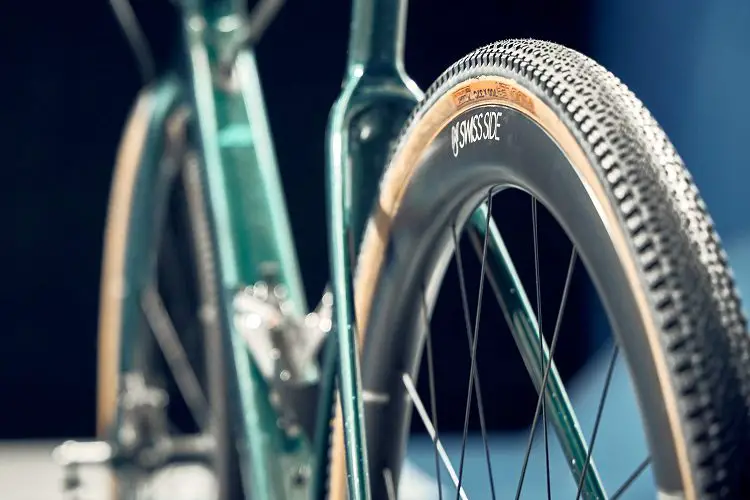
Gravel tires come in a variety of different treads, which is what makes them so unique and interesting. You can either use them for smooth surfaces, like asphalt, or you can equip your bike with rough, durable treads that put most mountain bike tires to shame.
Some gravel bike tires types have diamond-shaped treads, while others have a pattern of square bumps that help grip the dirt easily.
There’s no one, perfect gravel tire solution that you can just suggest to someone – you need to see all gravel tires to really know what you’re up against.
Take a hard look at how you ride your bike, and the roughest terrain you normally ride on, and make an assessment based on these factors. You don’t need overly aggressive gravel tires if you aren’t going uphill on loose dirt.
Studded Tires
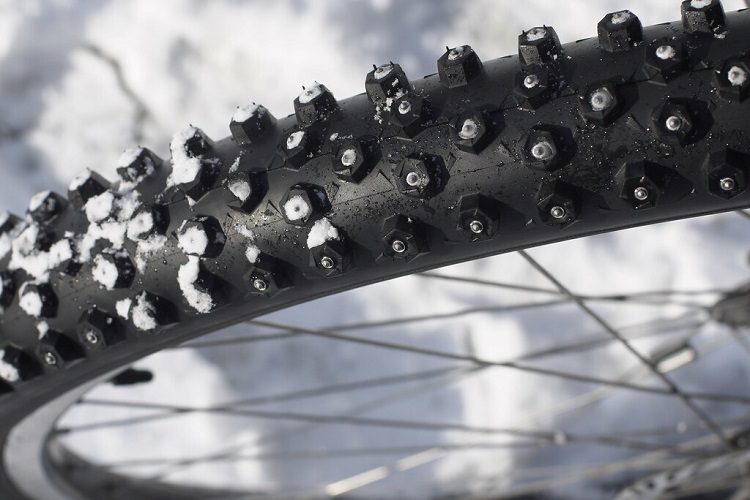
Studded tires are very specific and won’t be a great option for everyone. Unless you live in an area that has consistent snow each winter, you won’t find much use for these. Studded tires have actual metal studs embedded all along their exterior.
Each stud grabs onto and grips any ice as you ride over it. However, metal can get extremely cold and become slippery by itself, so keep in mind that these bike tires types aren’t completely foolproof.
You can’t just ride across the ice with studded tires as if it were a clear asphalt road.
When your tires grip the ice, you will feel a bit of traction. Studded tires can have dozens to hundreds of studs in them, depending on the manufacturer’s specifications. More studs are typically better for icier climates.
In the US, studded tires are most often used in areas such as Michigan and the surrounding areas and the northern section of New England, where winter can cause major temperature drops that freeze the ground. You don’t need these if you’re just combatting typical snow.
Fat Tires
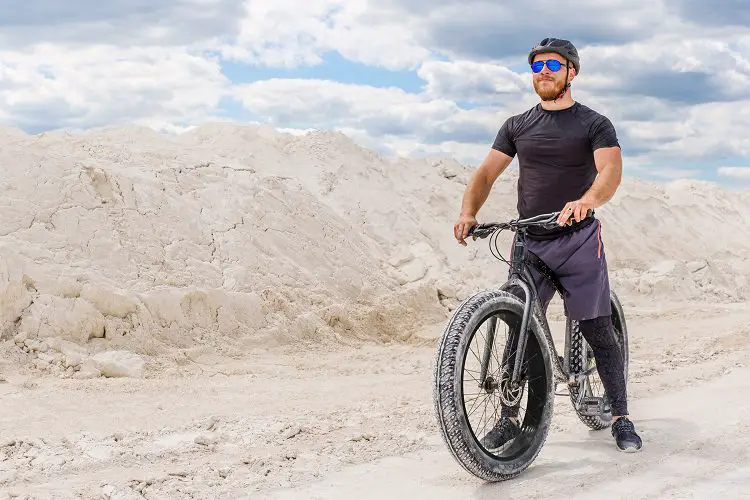
Simply put, fat tires are extremely wide tires. They’re not used for street cycling, though. Fat tires are ideal for riding on less-than-ideal terrains, such as sand, snow, or even mud. If you enjoy going off-road on your bicycle, fat tires are an investment.
But here’s the thing: You can’t just put fat tires on the bicycle you’re riding now. These are often at least 4 ” thick, so there’s a high chance that they won’t fit on the bicycle that you’re using right now.
You need a fat bike – one that can support these tires and that has the proper level of suspension.
The frame around the wheel is wider than you’ll see on an average bike, which is typically why cyclists who want fat tires will buy an entire fat bike and maintain it separately from their road bike or mountain bike.
Fat bike tires aren’t nearly as available as other bike tires types. Unless you purchase them online or have a specialty bike shop nearby, you won’t be able to replace your tires with ease.
One major benefit of fat tires is their durability. Because they’re designed for rough terrain, they’re thick enough to handle almost anything you throw at them.
Keep in mind, these are easier to ride on sand and snow with, but not easy by any means. You should still have experience with cycling before you invest in fat bike tires.
Tubeless Tires
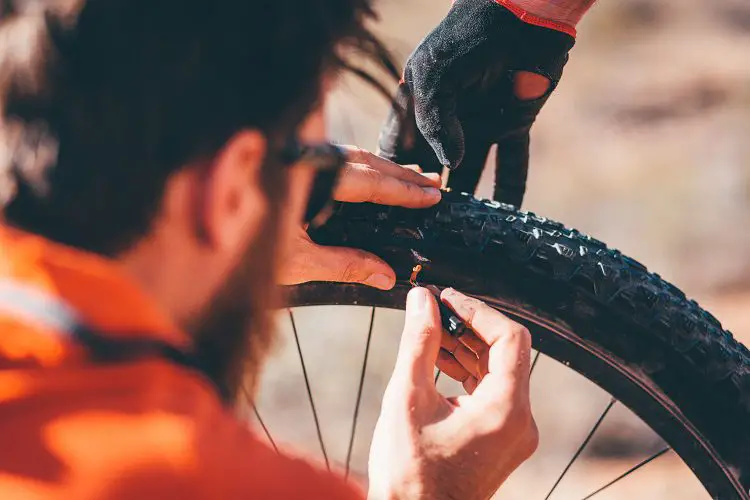
Tubeless tires essentially marry the benefits of clincher tires and tubular tires into one. As a matter of fact, most mountain bike tires are tubeless for that very same reason.
With tubeless tires, you have no inner tube, but you also don’t have to glue or tape the tires down as you do with tubular tires.
So, why do other bike tire types even exist if these are so great?
Because tubeless tires feel better when you ride on trails, but they cost more money, and not everyone can afford them. We’ve seen a movement of street cyclists going tubeless to get a smoother ride.
The hype behind tubeless tires isn’t unwarranted, but if you’re someone who repairs your own bike and replaces your own tires, you’ll quickly see why clinchers are still in style.
Tubeless tires require sealant, which gets extremely messy. They also take a lot longer to mount the first time around until you get used to it, however, in our experience, it’s still difficult.
Additionally, you still need a tube. Not in the tire, of course, but as a backup. The sealant inside a tubeless tire acts as a failsafe, filling in any small punctures as you ride to prevent air from escaping.
If a break in your tire is too big to handle, you’ll need a backup tube to pop in so you can make it back home.
Tubeless tires are great, but they’re much better if you don’t repair your own bicycle and bring it into a shop instead. The price can sting, so be prepared to spend more on tire repairs and replacements if you decide to go completely tubeless.
Tubular Tires
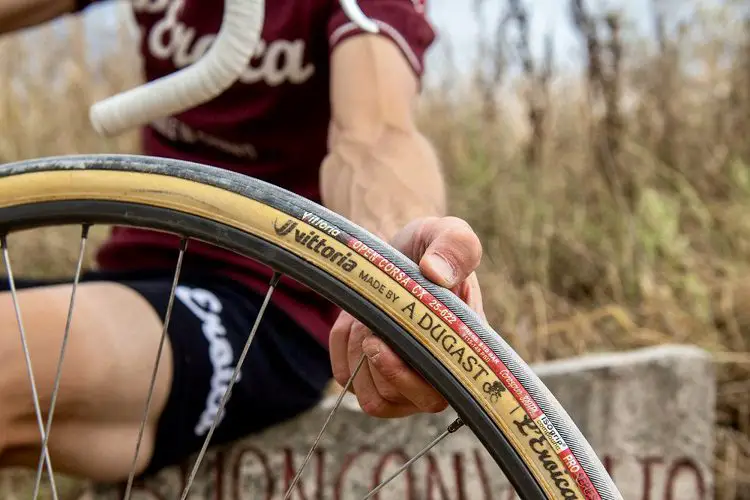
These tires don’t have a separate tube and exterior casing (tire). Instead, the tire is the tube that holds your air pressure. Think about the inside of the tire being lined with rubber that maintains the air pressure, like a tube and tire fused into one.
The thing is, tubular bike tires types may sound like a smarter solution, but they’re more difficult to construct. You have to make sure the interior lining can withstand air pressure, and that it doesn’t affect the exterior rubber.
Tubulars are most often compared to clincher tires (because they’re considered an upgrade over clinchers). These tires are lighter than clinchers, but that’s not the only upgrade – tubular tires are also more durable.
But there’s a reason that clinchers are still around, and why some cyclists choose them over tubular tires.
If you endure damages while you’re riding (because at some point we all inevitably will), tubular tires don’t sustain well – the entire tire/tube is punctured and the tire deflates or blows out.
You can repair a clincher tire without affecting the interior tubing. Tubulars are generally safer since you can ride on them with lower tire pressure. However, this isn’t a major selling point or a reason to choose them over another type.
Thankfully, tubular tires are just as available as most other tire types, so you shouldn’t have a hard time tracking them down.
Road Bike Tires
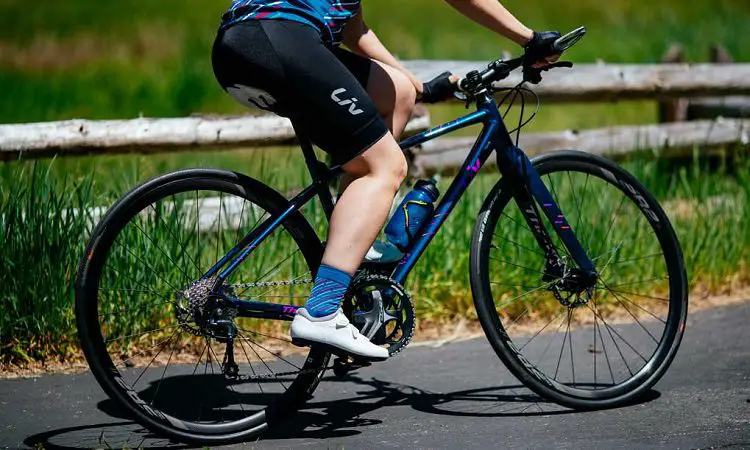
Road bike tires are a classification that you can fit tubular, tubeless, and clincher tires into. These types of road bike tires are specifically designed to be used for on-road activity, however, there’s a bit of overreach.
Mountain bike tires are usually tubeless, and we’ve seen a lot of crossover from mountain bike tire designs into traditional, professional cycling. This is interesting, but not without merit.
Tubeless tires are lighter than clincher tires. Simply put, when you opt for performance in a professional setting, going with a lighter option can boost your performance by a measurable amount.
This is why cyclists have started to use tubeless tires as a bike tire replacement on their road bikes.
Clincher systems are inexpensive and common, so it’s not difficult or expensive to find a replacement tire if yours blows out. With tubeless tires, it can get very pricey to replace them.
You can’t just pop open a Schrader valve and pump up your tire with a tubeless system. Instead, you’ll have to seek a professionally installed replacement.
You can already see the dollar signs adding up, can’t you?
That’s why they’re becoming more common in professional cycling, where money isn’t as big of a deal, with sponsors and earnings to back cyclists – they see the lightweight benefits.
Conclusion
Now that you know how every type of bike tire works, what their pros and cons are, and which bike types they’re designed for, you’ll be better equipped to replace your bicycle tires and tubes without worrying about choosing the wrong type.
Each bike tires types has its own distinct properties. Make sure you get the right tires for the job, and your bike will treat you well. Be sure to keep them pumped up to prevent wear and tear (regardless of which tire type you choose), and keep on cycling.
Resources:
Last Updated on June 25, 2023 by Danijel Cakalic

